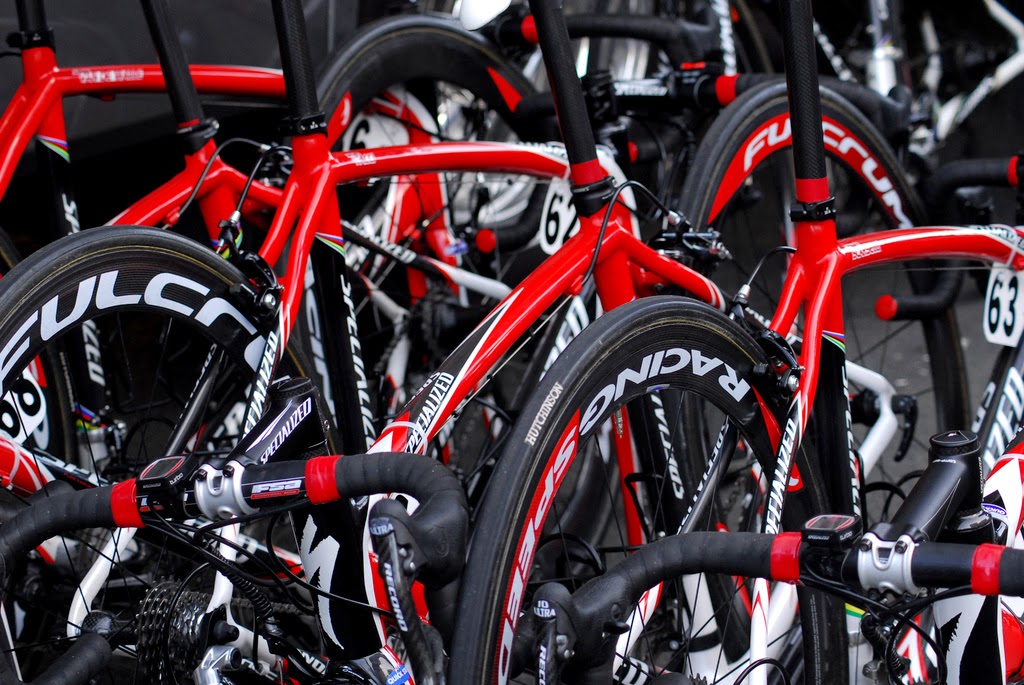Below you will find lots of helpful advice on how to enjoy your cycle
and get your bike to work for you:
Bike Gears
Most new cyclists keen to get fit think they are getting a better
workout if every pedal stoke is a strain and the quads are burning. Although
there's a place for low-cadence workouts, during a normal ride, aim for a
smooth spin at between 85-100 rpm (pedal revolutions per minute) which is much
more efficient -- and easier on the legs, especially the knees.
Handlebar grip
Always keeps a good grip on the bikes handlebars using the thumbs.
Don’t rest hands on top of the bars.
A rear mud guard is a good idea during winter
- Keeps
your back dry and warm by wearing correct bicycle
clothing (even if it does not rain during the cycle a wet road
could have your back wet and cold in a few minutes).
Your fellow cyclist will appreciate your mudguard as it reduces the
amount of water and grit thrown into the face of the cyclist behind.
Food and Nutrition
Eat a healthy breakfast 30/40 minutes before the start of your cycle
• Porridge and a slice of toast are a good option.
• Light cereals such as cornflakes may not provide the slow release energy you
will need for a cycle lasting a few hours.
Carry additional food
• Some bananas and
sports
nutrition such as energy bars (Powerbar Energy Bar ) are ideal.
• Take two water bottles. Add fruit juice to improve the taste or use a sports drink
like PowerGel from Powerbar if going on a longer cycle. Try to drink/eat small
amounts often.
• If you are nervous eating while on the move, wait until you are at the back
of the group to eat.
Alert Calls
knowing to alert the cycling group or partner to hazards on the road
and traffic approaching is very important. The cyclists at the front of the
group should clearly and loudly announce hazards on the road ahead. These are
announced early so the group is aware of potential dangers and can smoothly and
safely take evasive action. Cyclists at the front of the group call the hazard
and people behind repeat the call so the message gets passed through the group.
Example of calls
• “Hole on left” = Pothole on the left hand side.
• “Stones on the right” = Stones on the right hand side.
• “Gravel in middle” = Loose gravel in the middle of the groups path.
Moving cars approaching the group
If a car is approaching from behind (or a car following the group is beginning
to overtake the group) “Car up” is called. The last person in the group should
be aware of traffic following/approaching the group from behind.
If a car is approaching the group from in front: “Car down” is called.
Puncture
The person who gets the puncture should call “puncture”. This alerts the group
that someone has a puncture so the group can stop.
The call also alerts people who are cycling behind the person that has suffered
the puncture that there is someone in the group who may need to stop
immediately and that they need to be alert.
Cycle two by two / don’t overlap the rear wheel of the cyclist in front.
Cyclist in front cannot see the position of cyclist following behind. If
your front wheel overlaps the rear wheel of the person in front, any movement
left or right could result in wheels touching and a loss of balance and a large
number or people could be involved in a crash.
Never pass another cyclist on the inside (left), always pass on the outside
(right).
Avoid freewheeling when at the front of the group
- It
usually requires more effort to cycle at the front of the group.
- If a
cyclist at the front of the group freewheels the following cyclists could
easily run into the back of the cyclist at the front, causing an accident.
Always keep pedalling when at the front of the group.
Enjoy your Cycle
Last but most importantly, build up the distance of your cycles
gradually. If you are comfortable with 20 miles try 25 then 30 miles and so on
in small increments.
Join a bike club where possible and ask the group leader (or another
club member) for advice if your have any questions. Cycling club members are
always delighted to advise new members








